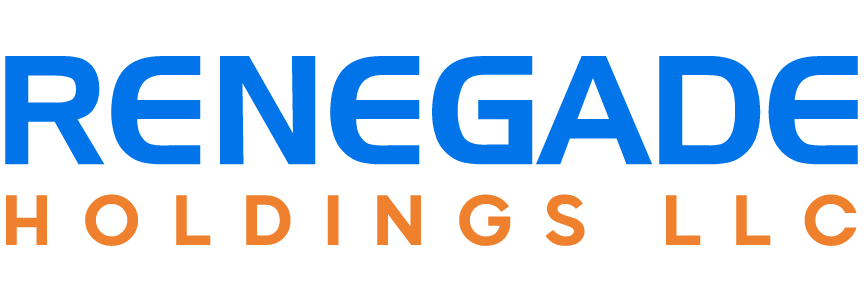World’s Largest Stablecoin Company Seeks $500B Valuation: Tether Eyes a Return Amid U.S. Crypto-Friendly Shift
With renewed enthusiasm from U.S. regulators toward cryptocurrency innovation, Tether, the world’s largest stablecoin issuer, is setting its sights on an ambitious $500 billion valuation. This comes on the heels of shifting policy under a more crypto-friendly regulatory atmosphere, rekindling American opportunities for blockchain enterprises long deterred by uncertain legal frameworks. As contractors navigating federal and state procurement landscapes consider opportunities in emerging technologies, Tether’s bold move signals a significant pivot in how digital currencies could cross into mainstream public-sector projects.
The Stablecoin Giant’s Ambition: What’s Behind the $500B Target?
Tether, the creator of USDT—the most widely used stablecoin globally—anchors its digital coins to the U.S. dollar, enabling efficient and low-volatility cryptocurrency transactions. With over $100 billion in circulation as of early 2024, Tether dominates daily crypto trading volumes and has become central to blockchain finance infrastructure.
Valuation Fueled by New Revenue Models
In addition to traditional issuance fees, Tether now generates massive interest income from U.S. Treasury holdings supporting its reserve backing. With those holdings earning significantly more in today’s high-interest rate environment, the company has reported multi-billion-dollar quarterly profits. Industry insiders suggest that Tether’s stablecoin operations now resemble a digital central bank—a characterization that adds weight to its $500 billion projection.
U.S. Policy Tailwinds Fueling Growth
A string of regulatory developments, including executive actions supporting fintech innovation and new draft legislation clarifying stablecoin oversight, have reinvigorated blockchain entrepreneurship in the United States. The SEC, CFTC, and Congress have increasingly signaled intent to regulate—and not outright ban—key aspects of crypto finance. This friendlier stance could pave the way for companies like Tether to return to U.S. soil after years of operating primarily offshore.
Implications for Federal and Maryland State Contractors
The resurgence of crypto interest in the U.S., powered by major players like Tether, presents new opportunities and expectations for government contractors involved in financial technology services, cybersecurity, and compliance-oriented technology.
Blockchain-Enabled Payment Solutions
Procurement officials at both the federal and state levels have looked to blockchain for real-time payment solutions, fraud prevention, and cross-border transaction efficiencies. Stablecoins such as USDT could eventually play a role in state disbursement systems or grants management if regulatory clarity solidifies.
Cybersecurity and Compliance Demands
Stablecoin integration into government systems would demand heightened IT security and real-time auditing capabilities. Contractors specializing in FISMA, FedRAMP compliance, and cybersecurity service delivery may find new scope requirements in future solicitations that touch on digital asset technologies.
Opportunities in Maryland Fintech Ecosystem
Maryland has shown increased interest in supporting blockchain technology pilots, including through its TEDCO (Maryland Technology Development Corporation) funding arm. Contractors with DLT (Distributed Ledger Technology) capabilities could help shape pilot programs integrating stablecoin technologies within localized government operations.
Risks and Considerations for Public-Sector Engagement
Despite Tether’s bullish ambitions, stablecoin adoption still faces hurdles. Past controversies about reserve transparency and offshore operations have marred Tether’s reputation, raising due diligence concerns for government stakeholders. Contractors proposing Tether integrations or use-case pilots in public-sector RFPs must ensure compliance with OFAC, AML/KYC, and other federal regulations.
Additionally, any advances involving cryptocurrencies in government projects must undergo rigorous legal review and policy vetting. Capable contractors will need contract language that explicitly defines risk boundaries and technical standards, especially when governments are dipping their toes into disruptive financial tech.
Conclusion
Tether’s $500 billion valuation target signals more than market ambition—it reflects a pivot in crypto’s long-fractured relationship with U.S. governance. With a regulatory thaw underway, stablecoins could slowly find their place in the federal and state contracting ecosystem. Maryland contractors and federal vendors in fintech, compliance, and cyber are ideally positioned to watch for emerging pilot programs and blockchain RFI/RFQs. As Tether re-enters the U.S. narrative, project managers and procurement professionals should prepare for future acquisitions and requirements where smart contract fluency and financial innovation will be essential.
Stay tuned for ongoing updates on stablecoin regulations, digital currency pilot initiatives, and how emerging technologies converge with public-sector priorities.

